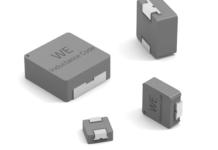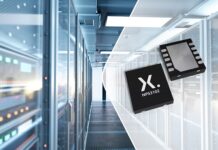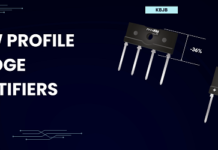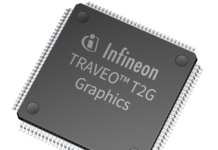Automotive semiconductors are electronic components that are specifically designed for utilization in automobiles. These semiconductors play a crucial role in enabling advanced features and functions in modern automobiles. They are used in a variety of automotive systems, including powertrain control modules, infotainment systems, engine control units, body control modules, advanced driver-assistance systems (ADAS), and others. The automotive semiconductor industry is experiencing growth due to factors such as rapid advancements in the automotive sector, increase in need for safety features in vehicles, and intervention of novel technologies for advanced user interface (UI).
According to a recent study by Allied Market Research, the global automotive semiconductor market is expected to showcase a notable CAGR during the forecast period. Automotive semiconductors perform a variety of functions. They are capable of processing data, controlling electrical systems, regulating power, facilitating communication between various vehicle components, and enabling various sensor inputs and outputs. In order to meet the demands of the automotive industry, manufacturers are constantly striving to develop semiconductors that offer higher performance, improved energy efficiency, enhanced safety features, and greater integration. The rising popularity of electric vehicles has increased the demand for automotive semiconductors. EVs rely on complex electronic systems for charging infrastructure, motor control, battery control, and power management. Semiconductors with high power efficiency, low losses, and advanced thermal management capabilities are critical for improving the performance and range of electric vehicles.
Ethernet-based communication networks are increasingly being used to handle the increasing data traffic as vehicles become more connected and autonomous. Automotive Ethernet communicates between various vehicle systems and sensors using specialized semiconductor components such as Ethernet switches and controllers. Furthermore, advanced ADAS technology (Advanced Driver-Assistance Systems) also depends upon semiconductors. The system involves features like collision warning and avoidance, automatic emergency breaking, adaptive cruise control, and lane departure warning. Semiconductors enable the processing of sensor data, actuation of control systems, and decision-making algorithms, contributing to enhanced safety and convenience.
Components of automotive semiconductor:
- Microcontrollers (MCUs): Microcontrollers are integrated circuits that include a CPU (Central Processing Unit), memory, and a wide range of peripheral interfaces. MCUs are used in automotive applications to control and monitor functions such as engine management, powertrain control, body control, and infotainment systems.
- Digital Signal Processors (DSPs): DSPs are specialized microprocessors that are designed for high-performance digital signal processing tasks. In automotive applications, DSPs are utilized for image processing in ADAS system, speech recognition, audio processing, and other computationally intensive tasks.
- Application-Specific Integrated Circuits (ASICs): ASICsare customized integrated circuits designed for specific automotive applications. They provide high performance, power efficiency, and integration capabilities for specialized functions like image processing, specific vehicle control systems, and ADAS algorithms.
- Electric Control Unit (ECU): ECUs serve as essential vehicle components, and automotive semiconductors enable their operation and functionality. ECUs enable precise control, real-time monitoring, and integration of various systems within a vehicle by utilizing microcontrollers, sensor interfaces, communication protocols, and other semiconductor components. This improves vehicle performance, safety, and functionality.
- Power Management ICs: Power management integrated circuits (ICs) regulate and control the vehicle’s power supply. Voltage regulators, power switches, motor drivers, and battery management ICs are among them. These components ensure efficient power distribution, voltage regulation, and protection in a variety of automotive systems, including electric powertrains and charging infrastructure for electric vehicles.
- Sensors: Automotive sensors are important in gathering information from the vehicle’s surroundings and internal systems. These sensors involve pressure sensors, position sensors, gyroscopes, temperature sensors, proximity sensors, accelerometers, and more. They provide crucial information for several applications like ADAS, environmental control systems, and engine management.
- MEMS (Micro-Electro-Mechanical Systems) technology: It plays an important role in automotive semiconductors. MEMS devices are miniaturized mechanical and electrical components integrated into a single chip, combining mechanical structures, sensors, actuators, and electronics. MEMS-based semiconductors provide advanced sensing and actuation capabilities to the automotive industry, improving vehicle safety, comfort, and performance. They enable intelligent systems to monitor and respond to a variety of environmental and vehicle conditions, thereby improving the overall driving experience.
The growing popularity of EVs has resulted in an increase in demand for semiconductor components used in electric powertrains, battery management systems, charging infrastructure, and onboard electronics. Semiconductors with improved thermal management and optimized battery control are high in demand. Also, Automotive semiconductors now include enhanced security features to safeguard against cyber threats, ensuring the integrity and safety of vehicle systems and data. In order to address these concerns, hardware-based security modules, encryption mechanisms, and secure boot protocols are being implemented.
Prominent players like Infineon Technologies AG, NXP Semiconductors N.V., Renesas Electronics Corp, and ROHM Co. have adopted various competitive strategies such as mergers & acquisitions and joint ventures to build on their stand in the market. For instance, on 24 May 2022, Continental launched its latest sensors namely, BID (Battery Impact Detection) and CSM (Current Sensor Module) to protect the batteries of Electric Vehicles. This compact modular sensor structure monitors the current as well as the temperature of the battery. The BID solution is a lighter alternative to heavy underfloor protection. Moreover, The CSM will also aid in maintenance of battery parameters by limiting the effects of aging. The BID, in conjunction with a portable structure, detects underfloor impacts and informs the driver if a stop in a garage is required.
On the other hand, STMicroelectronics declared its latest MCUs developed for centralized electronic infrastructure and electric vehicles in February 2022. These MCUs include on-chip rapid control-loop processing. This led to cost reduction, layout simplification, and compliance in automotive safety.
Author: Gayatri Mohite, Allied Market Research


















